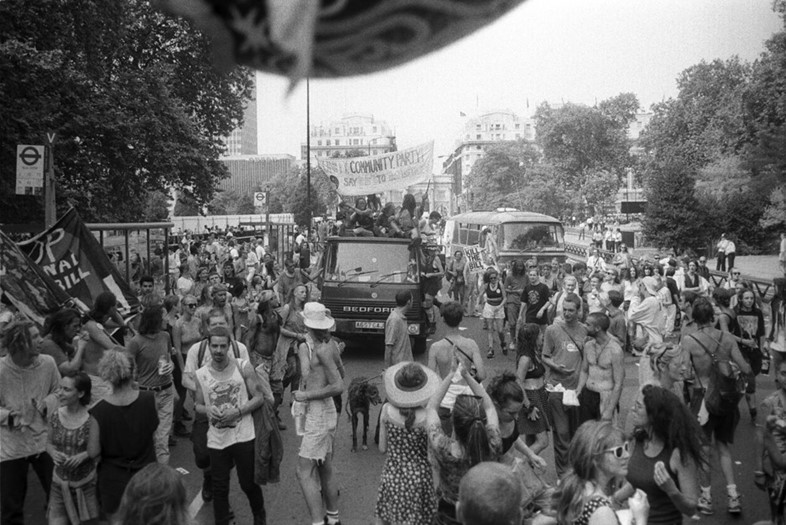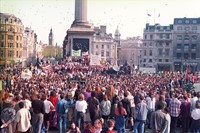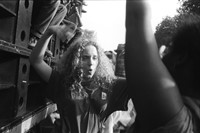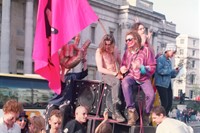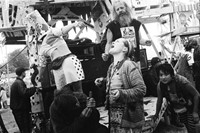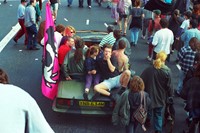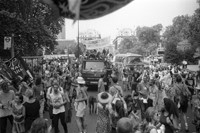Exist to Resist chronicles the work of Matthew Smith, who documented the partying and pill-popping of a politically motivated generation
For most of us, the images of 90s rave culture – acid bright neons, the ubiquitous smileys, gurns, very very baggy trousers – are associated with a sort of nostalgia for a time we didn’t live through, one soundtracked by euphoric beats and ameliorated by a chemically reinforced togetherness. But what those remembrances forget is that the raves, festivals and gatherings of just two decades ago stood for more than whistles and bleeps, but for a mass politicised stand against inherited doctrines of what a party was, where it should be, and how you should behave. Smileys stand as icons of a lost liberty from a time when parties symbolised a collective union of free spirits, even if just for one very long night, in a field somewhere set back from a grey UK motorway.
A new book, Exist To Resist: Activism, History and Having It…, looks to reinforce these ideas around politics and protest by connecting histories of rave culture, festivals and protest in the 90s. The gorgeous tome was perhaps unsurprisingly born in Bristol from “a love for the UK’s rave, sound system, and festival culture”. It draws together stunning images captured between 1989 and 1997 that depict gatherings and grass roots democratic activism from that brief period that ended all too quickly with the Tory government’s passing of the 1994 Criminal Justice Act.
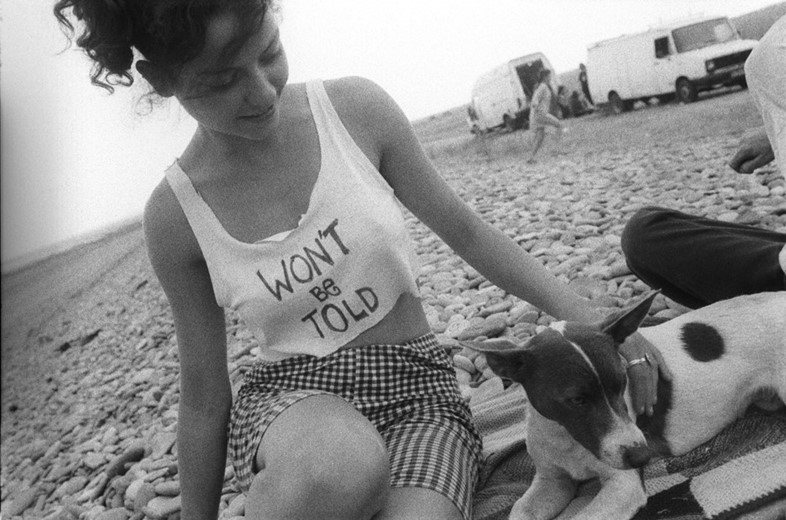
The images were shot by artist and documentary photographer Matthew Smith (aka Mattko) using a Nikkormat 35mm manual camera and a Rolleiflex twin lens reflex. The shots are unusual not only for their sensitive portrayal of the individual partygoers, children and scenes that rave culture fostered, but for the fact they exist at all — naturally, not many people welcomed documentation of events that skirted the borders of legality.
“Collectively we decided that it was our social and political responsibility to oppose that legislation [1994 Criminal Justice Act, which effectively banned raves] in any way possible, in order to stand up for and perpetuate a culture that we had known and loved,” says Smith. “My intention was to bear witness to this culture and to provide a positive personal truth in order to counter mass media and political representation of the lowest kind. Skint and mostly on the dole, I travelled the country during these times doing exactly that.” He adds, somewhat poignantly: “Every picture clearly tells a story…”
